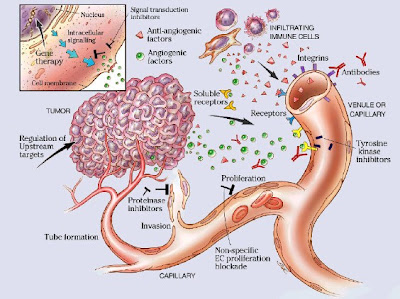Bone Cancer Biography
Source(google.com.pk)
Cancers can be discovered in bones in a number of different circumstances. When cancer is located in the bones, it is important to differentiate whether this cancer has spread from another site to the bones or whether the cancer originated in the bone tissue itself. This distinction is important not only for the sake of correct terminology, but also to accurately determine which treatment options are appropriate.
There are more than 100 types of cancer, and each cancer type is named for the organ or tissue in which it begins. When cancer cells spread, they may travel via the lymphatic channels to lymph nodes, or they may enter the bloodstream and travel to other organs or locations in the body that are distant from the site of the original, or primary, tumor. It is not unusual for cancers that originate in other parts of the body to spread to the bones and begin growing there. Certain types of cancers are particularly likely to spread to the bones. Cancers that commonly metastasize, or spread, to the bones include breast cancer, lung cancer, thyroid cancer, prostate cancer, and cancers of the kidney.
It is important to note that when these other types of cancer spread to the bone, they are still named for the tissue or organ where they arose and are not termed "bone" cancer. For example, breast cancer that has spread to the bones is referred to as metastatic breast cancer and not bone cancer.
In contrast to cancers which have spread to the bone, true bone cancers are tumors that arise from the tissues of the bones. These cancers, called primary bone cancers, are quite rare in comparison to cancers that have spread to the bones.
True bone cancer affects over 2,000 people in the United States each year. It is found most often in the bones of the arms and legs, but it can occur in any bone. Children and young people are more likely than adults to develop bone cancer. The symptoms of bone cancer tend to develop slowly and depend on the type, location, and size of the tumor. Pain is the most frequent symptom of bone cancer, but sometimes a lump on the bone can be felt through the skin.
Bone cancers are known as sarcomas. There are several types of sarcomas of bone, depending upon the kind of bone tissue where the tumor developed. The most common types of primary bone cancer are osteosarcoma, Ewing's sarcoma, and chondrosarcoma.
Osteosarcoma usually occurs between ages 10 and 25 and is more common in males than in females. Osteoosarcoma is most commonly found in the long bones of the arms or legs. Ewing's sarcoma is a tumor most commonly seen in people between 10 and 25 years of age that develops in the shaft (middle portion) of large bones, such as the hip bones, the long bones of the legs and upper arms, and the ribs. Chondrosarcoma is the bone tumor that is found mainly in adults. Chondrosarcoma arises from cartilage, the tissue located around the joints. Other, more rare types of bone cancer include fibrosarcoma, malignant giant cell tumor, and chordoma.
The treatment and prognosis of bone cancer depend upon multiple factors including the type and extent of the cancer, the patient's age and overall health status. Bone cancer may be treated with surgery, radiation therapy, chemotherapy, or a combination of these. Treatment for cancer that has spread to the bones (metastatic cancer) depends on the type of cancer (the tissue where the cancer started) and the extent of the spread.
Finally, another type of cancer can arise from blood cells produced in the bone marrow. Leukemia, multiple myeloma, and lymphoma are cancers that arise from these cells. These are referred to as hematologic malignancies (cancers of blood cells) and are not types of bone cancer.

















